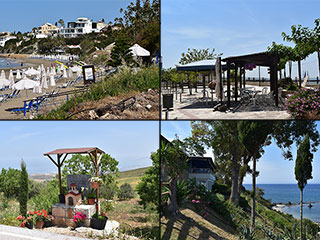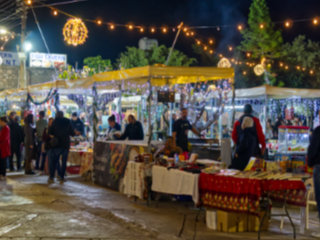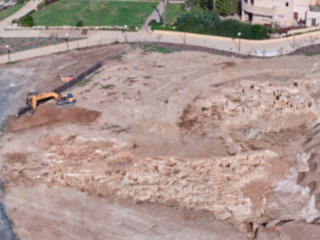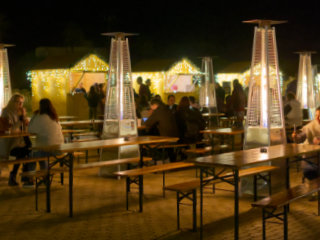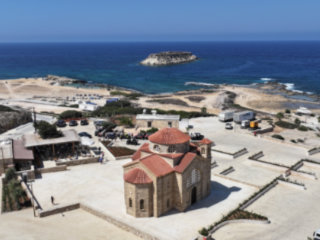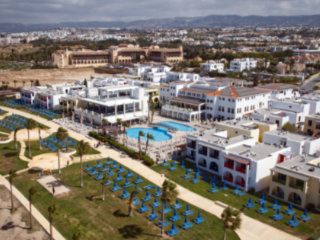Maronas In 2025
We first visited Maronas back in 2018. It is an abandoned village midway up the DIarizos Valley. We were passing the other day, and I thought it would be nice to revisit the area to see how it had changed.
Our Vantage Point
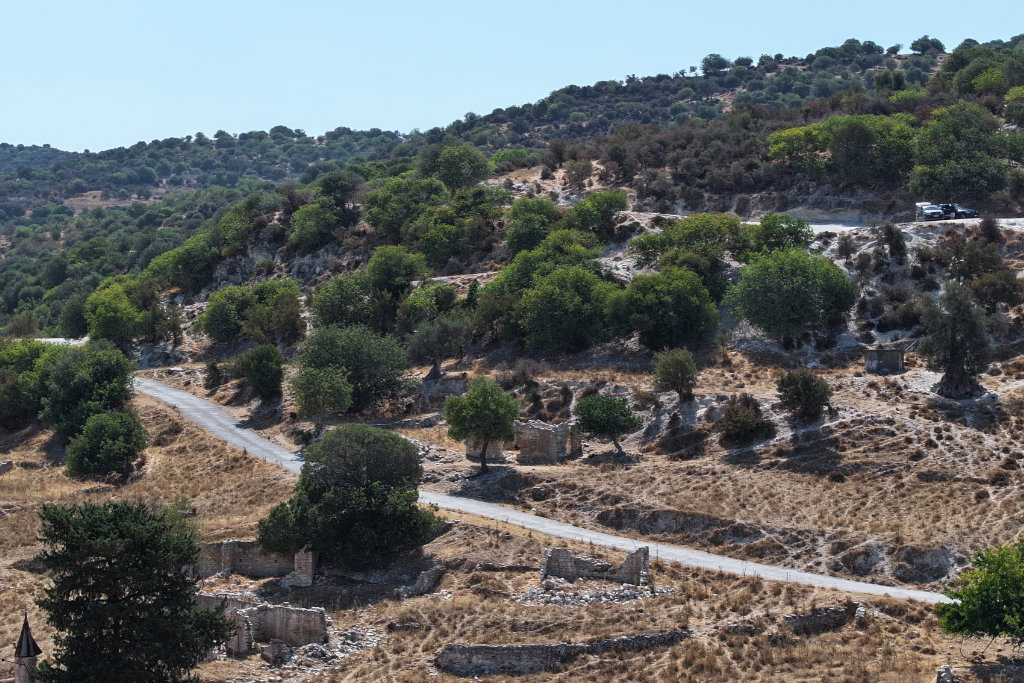
You can get to Maronas from the Diarizos Valley. Driving from Paphos along the B6 towards Kouklia, turn left just past the Asprokremmos Reservoir and take the road to Fasoula. Continue past the village to Mamonia and Agios Georgios. After that you will find a signpost pointing to Maronas, on your right. We've taken that route and driven through the village to park on a plateau directly above it. You can see us at the top right of the picture.
Goat Paths
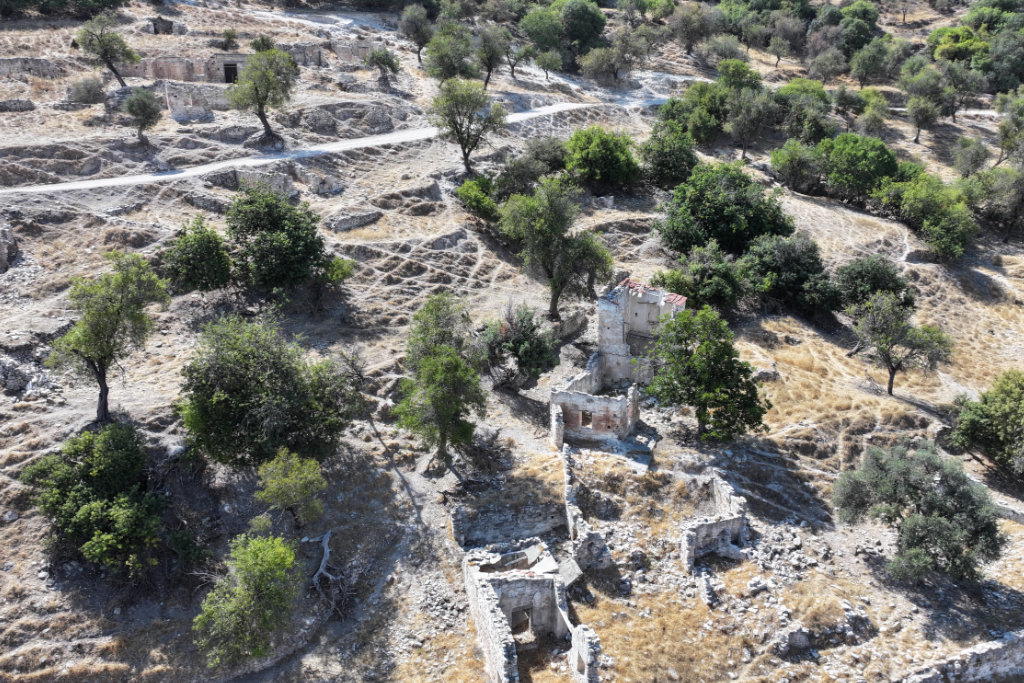
We launched the drone and the first thing that became apparent was the amount of goat tracks that wound their way through the ruins.
Maronas Mosque
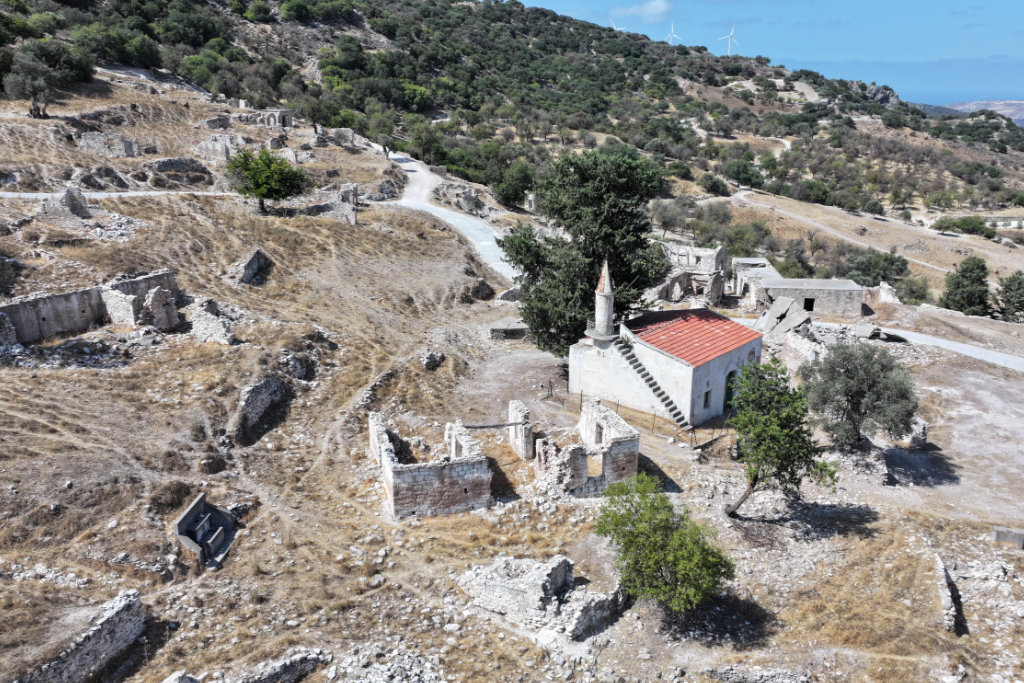
For more information on the village, you should check out our original article on Maronas. If you do you will see what Cyprus looks like in the Springtime - all lovely and green! And cool. It must have been a lot cooler then.
I've lifted a bit of that article as it explains why Maronas is abandoned:
From my somewhat limited research, I have found that the village got it's name from a Saint and martyr Maronas. But that is about it, and PRIO tells a different story. This is what the PRIO database has to say about Maronas:
Marona is located in the valley of Dhiarizos, twenty-four kilometers east of Paphos (Ktima) and five kilometers west of Mousere. The origin of the name is obscure. Some claim that the name implies that the village had a Maronite population at one time. However, Goodwin claims that the village was named after a mythological priest of Thrace. In 1958 Turkish Cypriots adopted the alternative name Uluçam, meaning “magnificent pine tree.”
Historical Population:
According to the Ottoman census of 1831, the village was solely inhabited by Muslims. However, British censuses report that until 1960, Marona was a mixed village with a Turkish Cypriot majority. The small Greek Cypriot presence in the village fluctuated, rising from one family in 1911 to 23 persons in 1931, before dropping to 14 in 1946. By 1960 there were only three Greek Cypriots living in the village. During the intercommunal tensions of the late 1950s, most of the Greek Cypriots of the village left behind their houses and moved to the relative safety of nearby villages. The total population of the village increased steadily from 179 in 1891 to 414 in 1960.
Displacement:
All but three Greek Cypriots were displaced due to the intercommunal tensions of the late 1950s. Approximately 20 Greek Cypriots abandoned their houses and sought refuge in the nearby village of Fini. No one was displaced during the intercommunal strife of 1963-64. However, the village became a reception center for displaced Turkish Cypriots from Pano Archimandrita(293). Richard Patrick recorded 35 displaced Turkish Cypriots still residing in the village in 1971. He also put the total population of this enclave at 125. Most of these displaced persons stayed in Marona until 1975, when they moved to the northern part of the divide.
The village was not attacked by Greek Cypriot forces in 1974. However, most of the villagers fled the village through the mountains to the island’s north, or took refuge in the British Base areas, later (January 1975) to be transferred to the north via Turkey. The remaining 23 persons were evacuated to the north under UNFICYP escort on 16 August 1975. They were mainly resettled in Agios Amvrosios/Esentepe(207), Prastio/Aydınköy(091), Zodeia/Bostancı(047), Morphou/Güzelyurt(072), Masari/Şahinler(068), Fyllia/Serhatköy(035), Lysi/Türkmenköy(167) and Famagusta(140). The total number of Marona Turkish Cypriots who were displaced after 1974 was approximately 110 (105 in the 1960 census).
Current Inhabitants:
After the departure of the Turkish Cypriots, no one settled in the village. The entire village is in ruins now.
Back In The Day
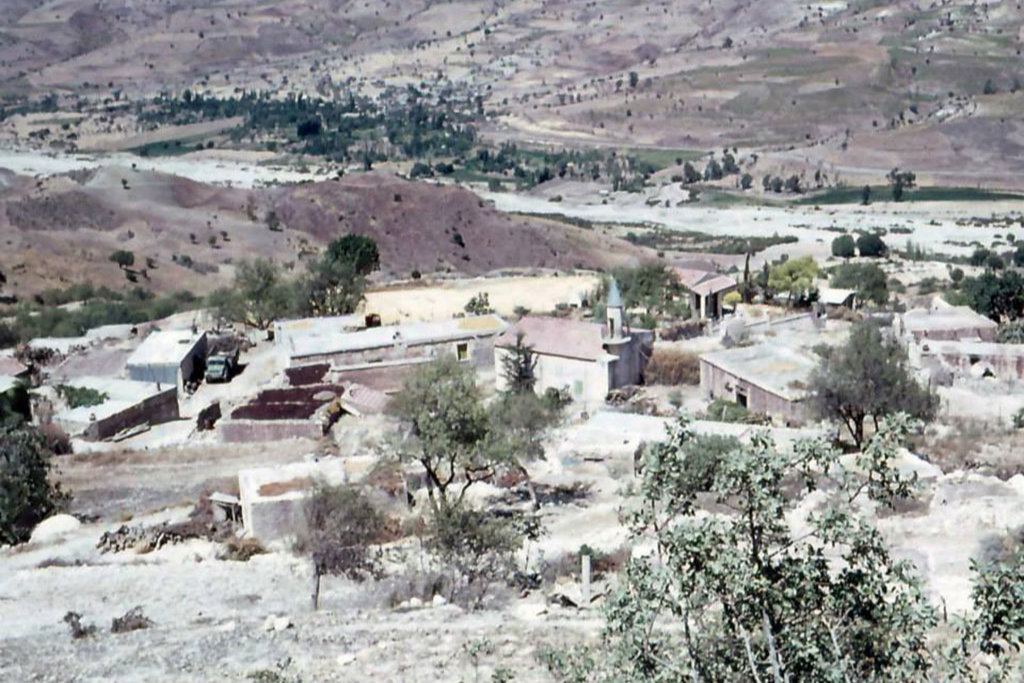
After our orginal article we were contacted by a Tommy Nilsson, who served in the UN Peacekeeping Forces. He was here in 1964 and took this picture of the village when it was still inhabited.
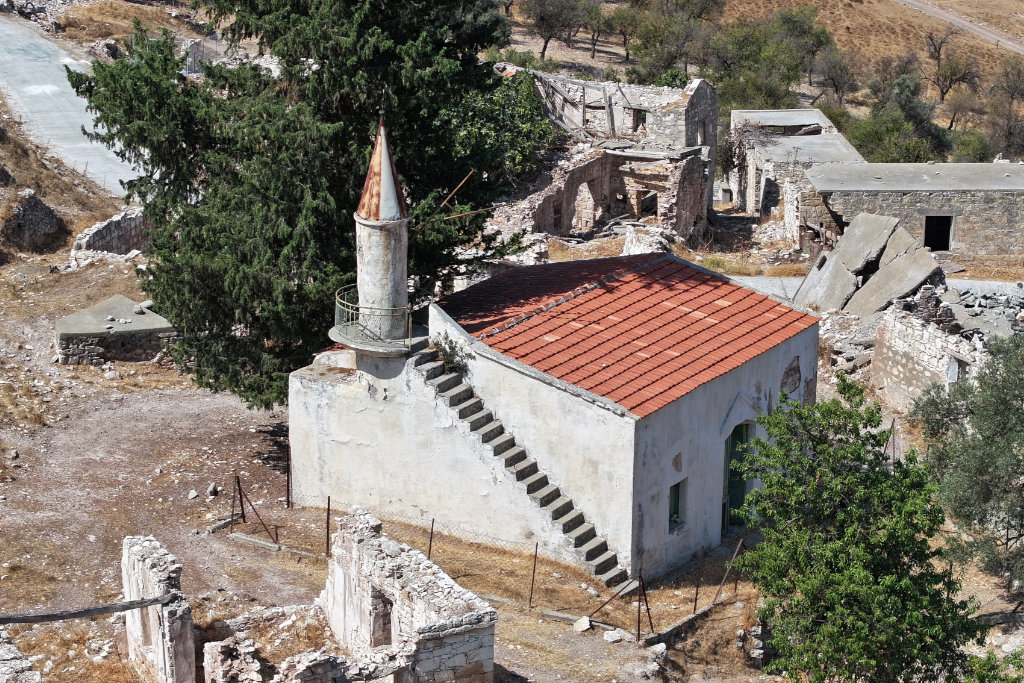
The mosque is still intact, but the buildings behind it are in very poor shape.
Page 1 of 3

Related Blogs:
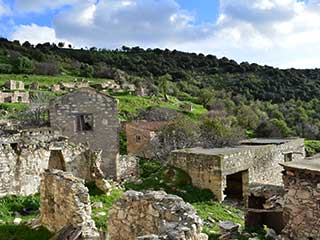
Abandoned Villages - Maronas
Last saturday my wife and I were in Paphos with a couple of hours to kill. So we decided to take a trip up the Diarizos Valley. Being on the Paphos / Limassol border, this valley is on the edge of the Paphos Life radar. However, it has a wealth of sites to visit, as you shall see over the coming weeks. Our specific destination was the abandoned village of Gerovasa. There is a fascinating bridge near to it, and we visited the village itself a few years ago, to do a geocache. However, on our way up the valley, we spotted some ramshackle buildings on the other side of the valley, and decided to take a detour...
Maronas Time Warp
A new member of our chat group, Tommy Nilsson, was stationed with the UN in Cyprus in 1964. Fortunately for us he liked taking pictures, and he has been sharing them. One picture caught my eye, as it showed the now abandoned village of Maronas as it used to look. I decided to revisit it to get a comparison shot...Good Pages To Visit

FB PagePaphos Life on Facebook
Like us on Facebook and stay notified of new blog posts.

FB PageOur Facebook Chat Group
Paphos Chat has been created for people who like our site and want to chat using Facebook. You can also easily upload photos of any size here. A lot of people are members of the Facebook chat group and the main forum. It's entirely up to you.
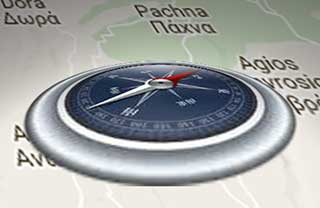
ListBlog Locations
Planning a day out? Then use our map of blog locations as a handy guide. Some of the places we visit our closer to each other than you might think, so take a look and start planning your next adventure...
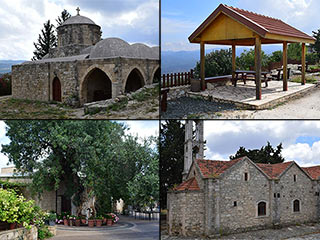
eBookCyprus Road Trip 01: the Kathikas - Panagia Loop
Let me take you on a journey around the region of Paphos, Cyprus. Starting at Paphos itself, we travel to Akoursos, then Kathikas, Kritou Terra and Simou. We continue past Lasa and Kannaviou, before taking in the delights of Panagia. Getting a bit more adventurous, we visit the abandoned villages of Statos and Agios Fotios, before passing through Choulou, Letymbou and Polemi, and rejoining the main Paphos - Polis road.
The route is suitable for all types of vehicle, and requires no off-roading. The guide contains about 130 photographs including shots of all the road signs you need to pay attention to, as well as some of the highlights you may experience along the way.
There are also several maps which will help you keep your bearings.
You can do this journey in a day, or you can break it up into chunks. You can also do it in reverse, to get some completely different views. It is entirely up to you.
